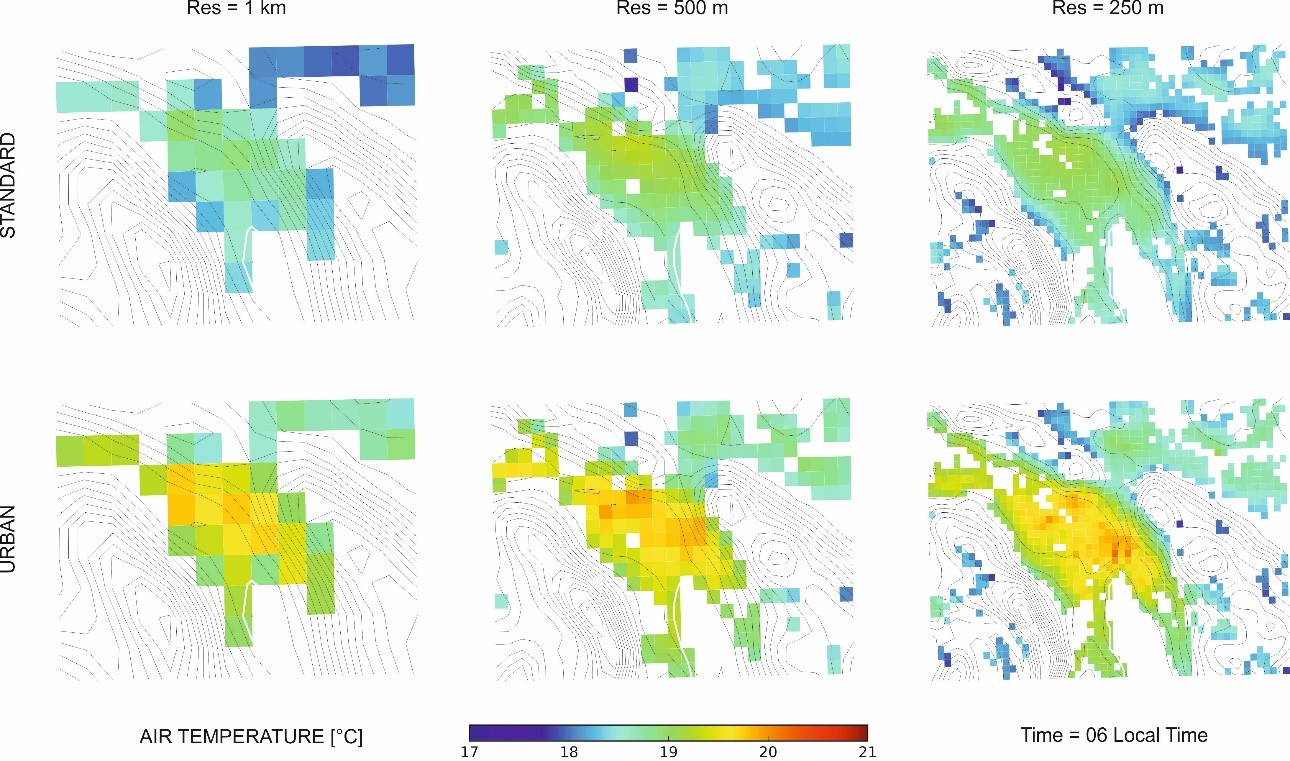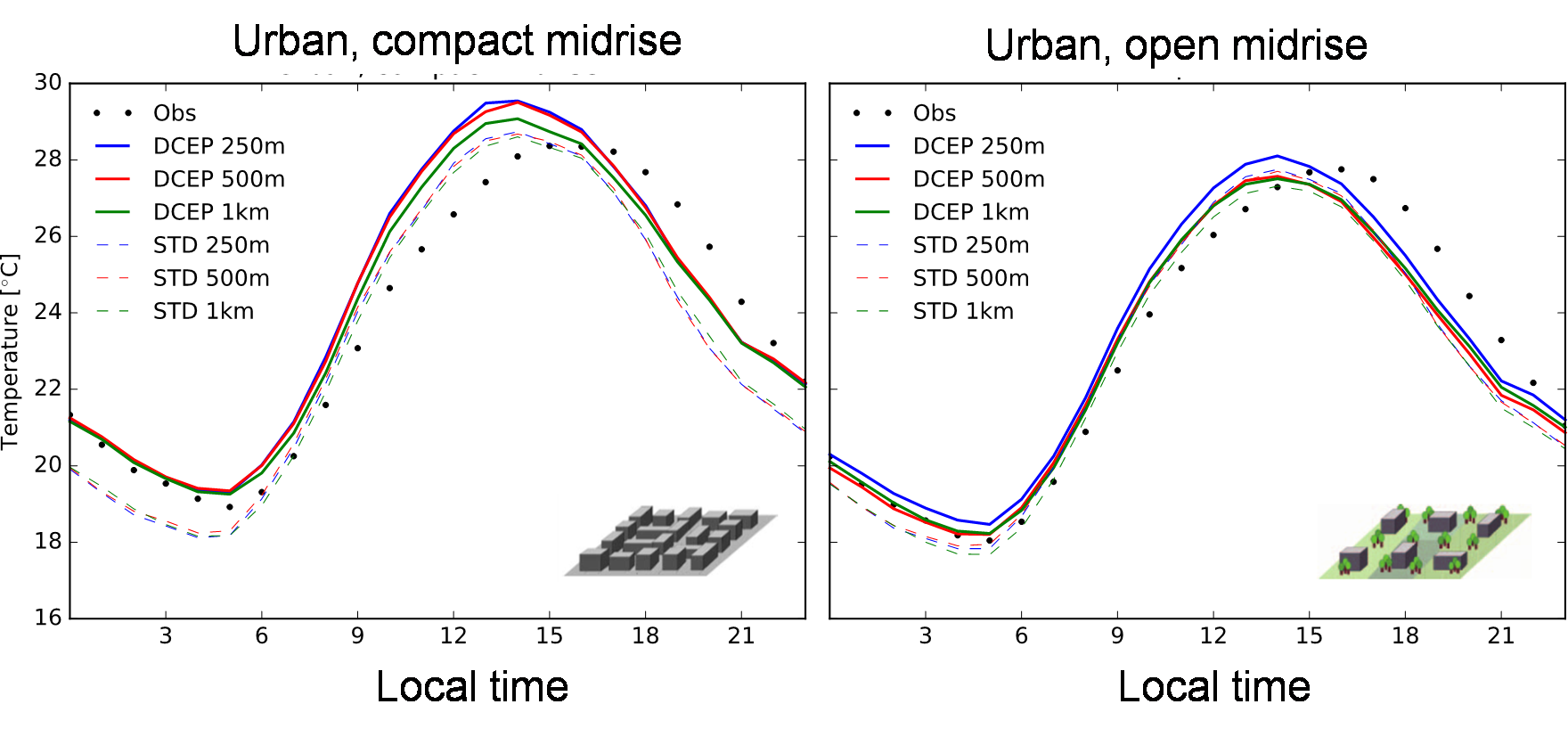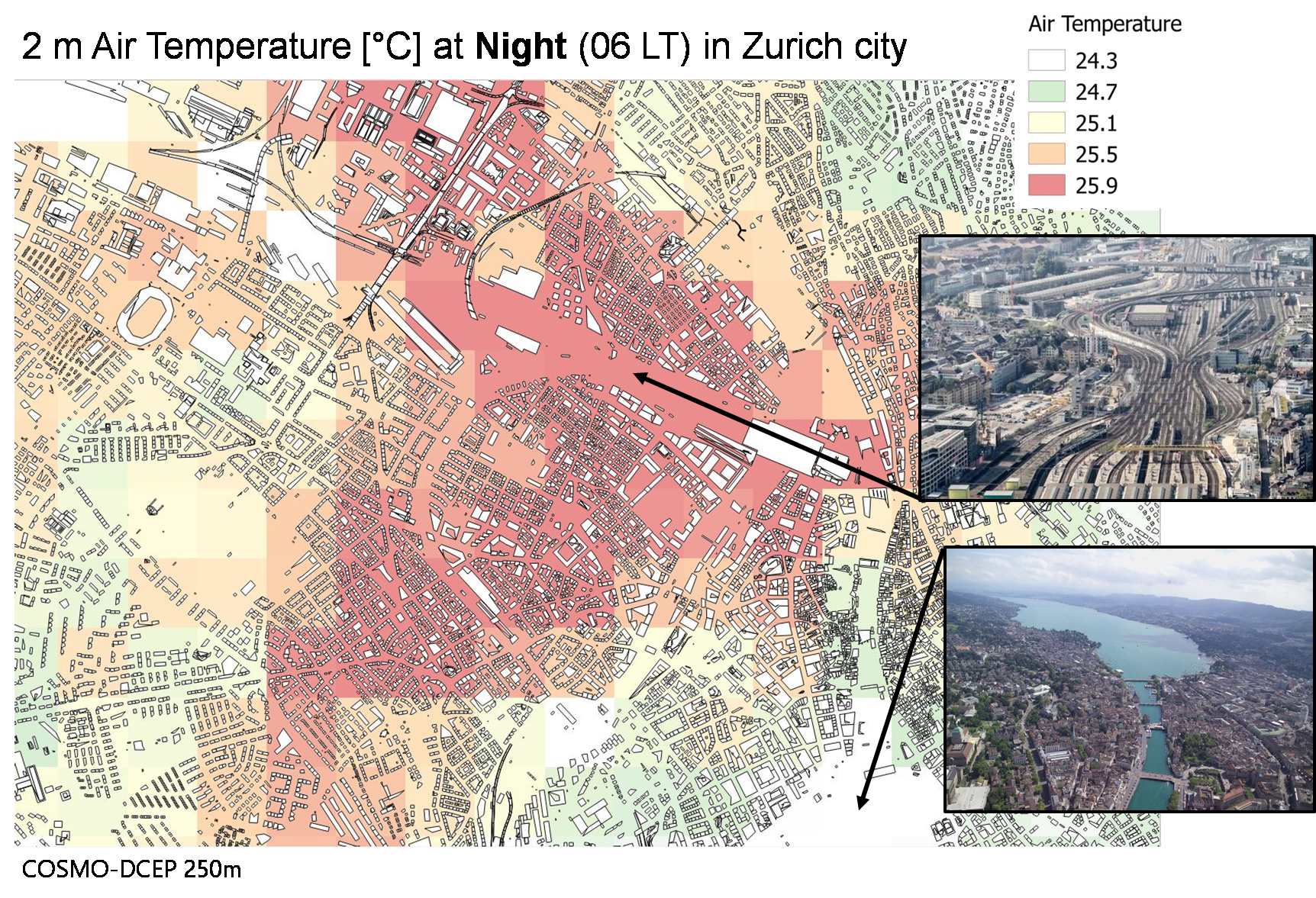Urban climate modelling at regional scale
The urban climate at regional scale is studied using a mesoscale weather and climate model (COSMO) coupled with an advanced urban canopy model DCEP (Double Canyon Effect Parametrization). The urban canopy is represented as a statistical ensemble of street canyons of different orientations with buildings of different heights, which consist of roofs, shaded walls and canyon floor (impervious and pervious parts). The mesoscale model exchanges information with the urban canopy model as fluxes of sensible and latent heat, momentum, turbulent kinetic energy and radiation. The fluxes are solved for a multilayer stack in the vertical direction from soil to top of the urban canopy layer in a one-dimensional, parametrized manner. The model has been used to simulate the heat wave event 22 June – 10 July 2015 in Zurich, where we observe a better representation of the intra-urban variability of the air temperature for higher resolutions. The model has been validated with observations at different urban and rural sites.


Collaboration
This study occurs in the frame of a running internal Empa research project between Laboratory of Multiscale Studies in Building Physics (J. Carmeliet) and the Laboratory for Air Pollution / Environmental Technology (D. Brunner).
